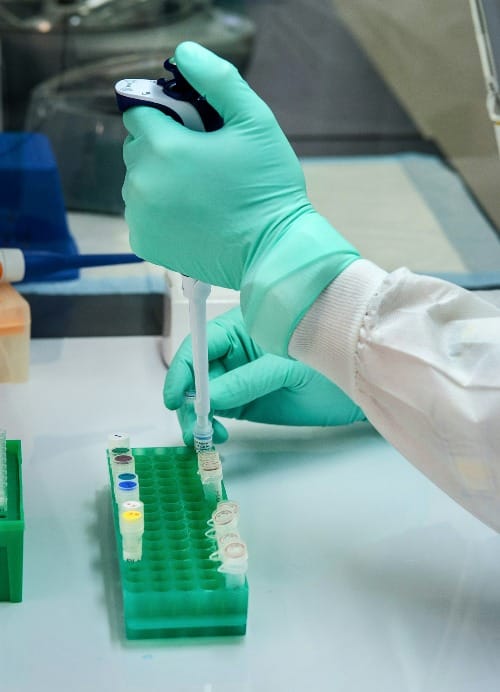Recent research into the reversal of grey hair has revealed promising insights, suggesting that factors such as stress reduction, antioxidant-rich diets, and certain medical treatments may temporarily restore natural hair color. While the phenomenon of grey hair reversal is not yet fully understood and remains inconsistent, studies indicate that maintaining holistic well-being and addressing oxidative stress could play a significant role in mitigating the graying process.
Role of Melanocyte Stem Cells
Melanocyte stem cells (MSCs) are crucial for the pigmentation of skin, hair, and eyes in vertebrates. These cells reside primarily in the hair follicle bulge region and are responsible for producing melanocytes, which synthesize melanin within melanosomes. Melanin is then transferred to keratinocytes, contributing to skin and hair pigmentation. The regulation of MSCs involves complex interactions with surrounding keratinocytes, which provide paracrine factors and adhesion molecules essential for melanocyte survival, proliferation, and differentiation[1][2]. Additionally, MSCs play a vital role in protecting the skin from UV radiation by absorbing UV rays and neutralizing free radicals, thus reducing the risk of skin carcinogenesis[1]. Disorders in MSC function can lead to conditions such as vitiligo, canities, and melanoma, highlighting their importance in maintaining skin homeostasis and pigmentation[3][4].
Melanocyte Stem Cell Activation
Melanocyte stem cell (MSC) activation is a critical process in the maintenance and regeneration of pigmentation in the skin and hair. MSCs, located primarily in the hair follicle bulge, remain quiescent under normal conditions but can be activated by various stimuli, including ultraviolet (UV) radiation and wounding. Upon activation, these stem cells proliferate and differentiate into melanocytes, which then migrate to the epidermis or hair matrix to produce melanin, the pigment responsible for coloration.
One of the key pathways involved in MSC activation is the Wnt signaling pathway. Activation of Wnt signaling stabilizes the β-catenin/Lef complex, leading to the transactivation of downstream target genes such as Mitf, which is crucial for melanocyte differentiation and function[2][3]. Conversely, inhibition of Wnt signaling promotes the maintenance of the MSC phenotype, preventing premature differentiation[3].
UVB radiation is a potent activator of MSCs. It induces MSC activation and translocation through an inflammation-dependent process, which involves the chromatin-remodeling factor Hmga2. This factor plays a significant role in UVB-mediated melanomagenesis, suggesting that targeting Hmga2 could be a potential strategy to suppress melanoma originating from MSCs[1]. Additionally, UVB exposure can lead to the direct migration of follicular MSCs to the epidermis, a process dependent on Mc1r signaling[5].
The interaction between MSCs and their niche is also crucial for their activation and function. Keratinocytes, the predominant cells in the epidermis, provide essential paracrine factors and adhesion molecules that support MSC survival, proliferation, and differentiation[4]. This cross-talk between keratinocytes and MSCs ensures the proper regulation of pigmentation and skin homeostasis.
Disruptions in MSC activation can lead to various pigmentation disorders. For instance, insufficient activation or premature depletion of MSCs can result in conditions such as canities (graying of hair) and vitiligo, while excessive or uncontrolled activation can contribute to melanoma development[4][5]. Understanding the molecular mechanisms underlying MSC activation is therefore essential for developing therapeutic strategies for these conditions.
Impact of Psychological Stress on Hair Color
Psychological stress has been quantitatively linked to hair graying, with recent studies showing that stress can cause hair to lose its pigment and, in some cases, regain it when stress is alleviated[1][5]. Researchers have discovered that stress affects the mitochondria in hair cells, which act as cellular antennas responding to psychological signals, leading to changes in hair color[1]. While stress-induced graying is more likely to occur when hair is already near a biological threshold for graying, reducing stress in younger individuals or increasing it in older individuals is unlikely to significantly alter hair color[1]. Despite the common belief, the direct link between stress and premature graying remains inconclusive, with further research needed to fully understand the relationship[2][3].
Oxidative Stress and Hair Pigmentation
Oxidative stress plays a critical role in the aging of hair, particularly in the processes of graying and hair loss. Reactive oxygen species (ROS), generated by both endogenous and environmental factors, can damage cellular structures, including lipids, proteins, and DNA. The body's natural defense mechanisms, such as antioxidative enzymes and non-enzymatic molecules, typically neutralize these free radicals. However, with age, the production of ROS increases while these defense mechanisms weaken, leading to an imbalance that results in oxidative damage to hair follicles. This damage affects melanocytes, the cells responsible for hair pigmentation, leading to decreased melanin production and the onset of gray hair. Additionally, oxidative stress can impair the function of melanocyte stem cells, further contributing to hair graying and loss. Understanding the mechanisms of oxidative stress in hair follicles may pave the way for new strategies to prevent or reverse hair graying and age-related alopecia[1][2][3][4][5].














Member discussion